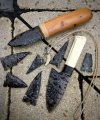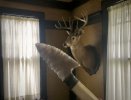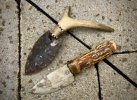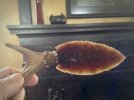waynorth
Dealer / Materials Provider
- Joined
- Nov 19, 2005
- Messages
- 33,336
The closest match I can find is Departure Bay point, 1600-2400 years old. Scroll down for a few examples. You can peruse that site to see if something else is a good match.
http://www.projectilepoints.net/Points/Departure Bay.html
My wife and I were enlarging our garden plot on the east side of Denman Island, when Joanne found that Point at the edge of the woods, about 10 inches deep, in 1981.







